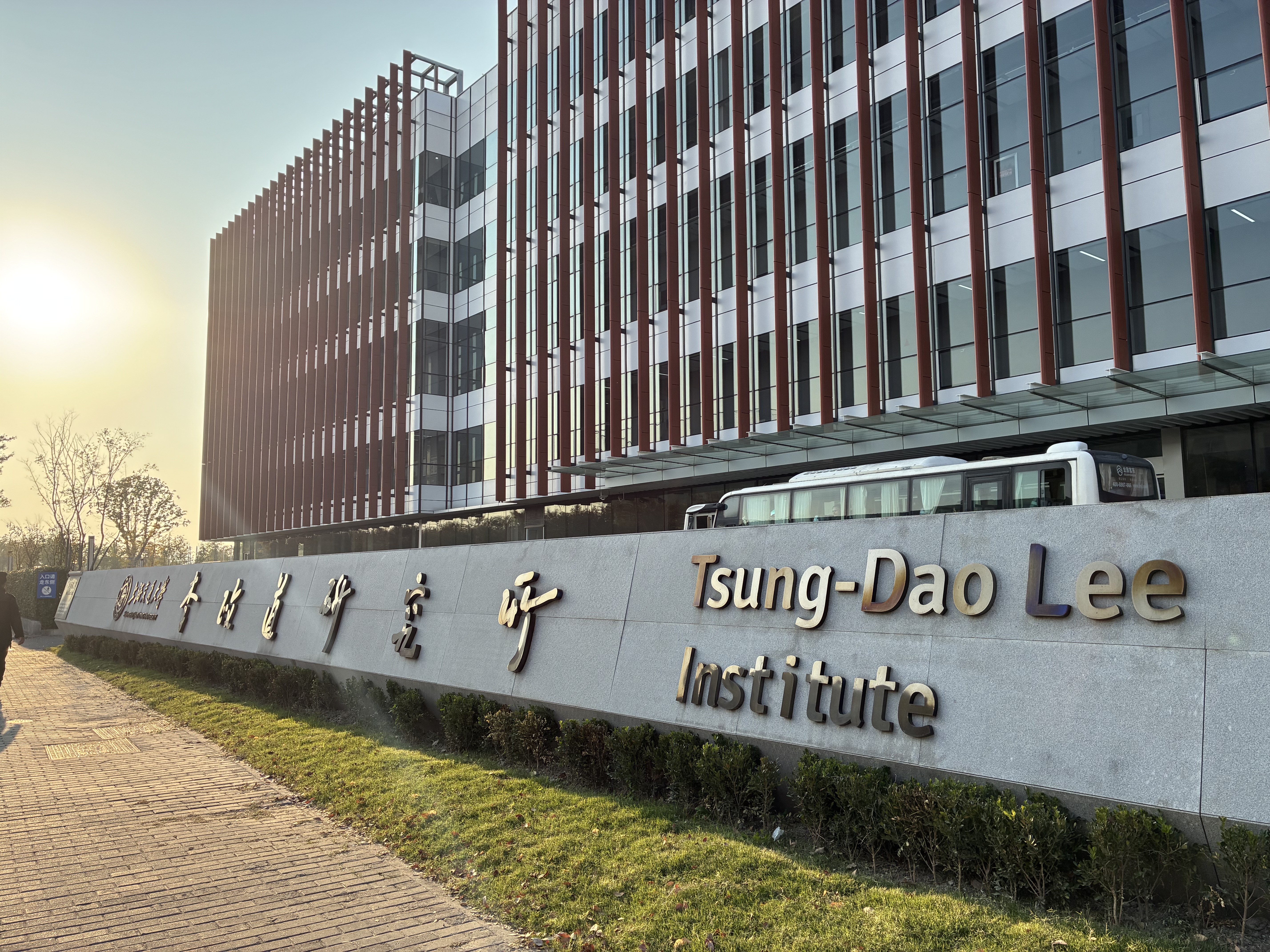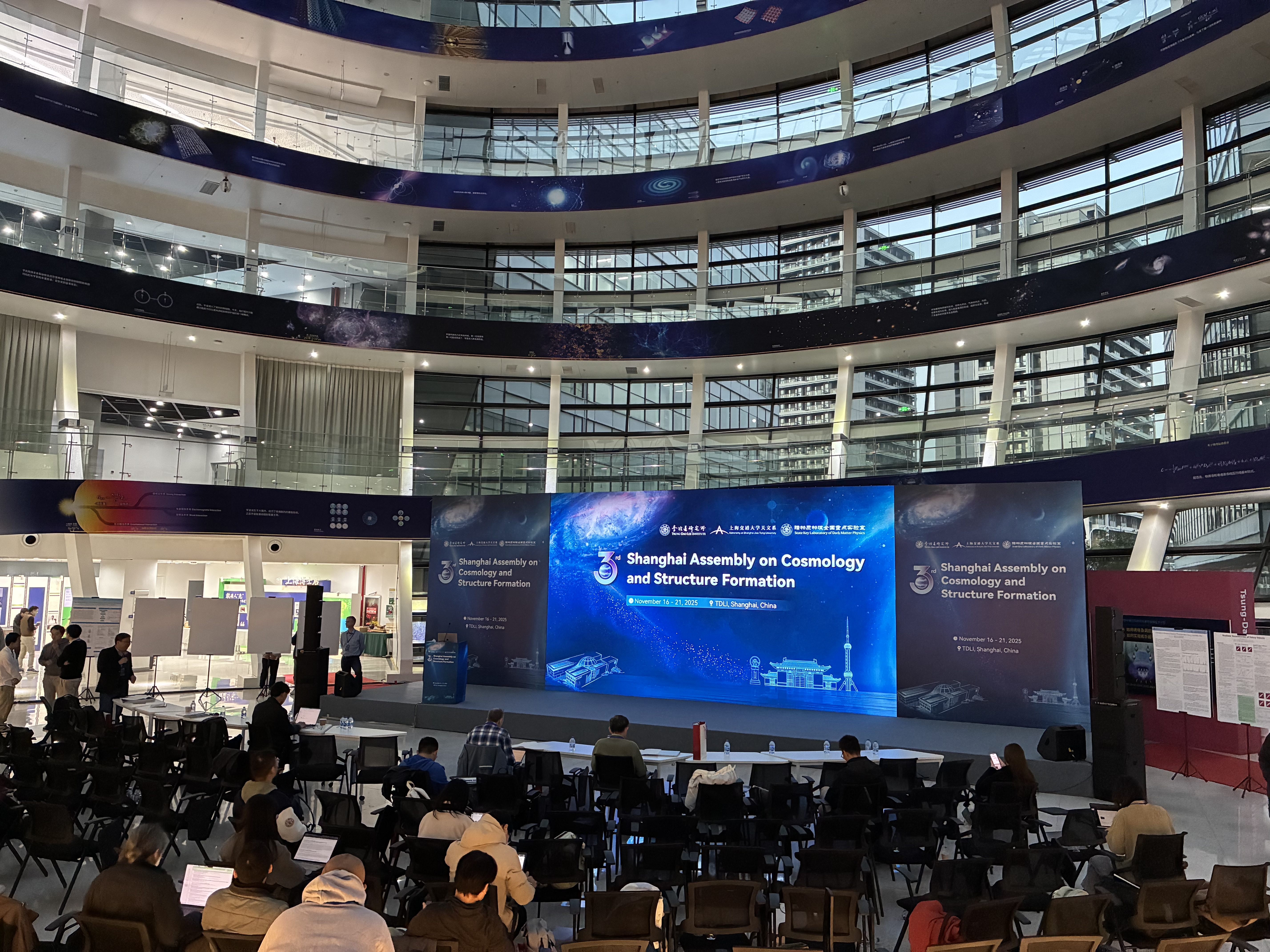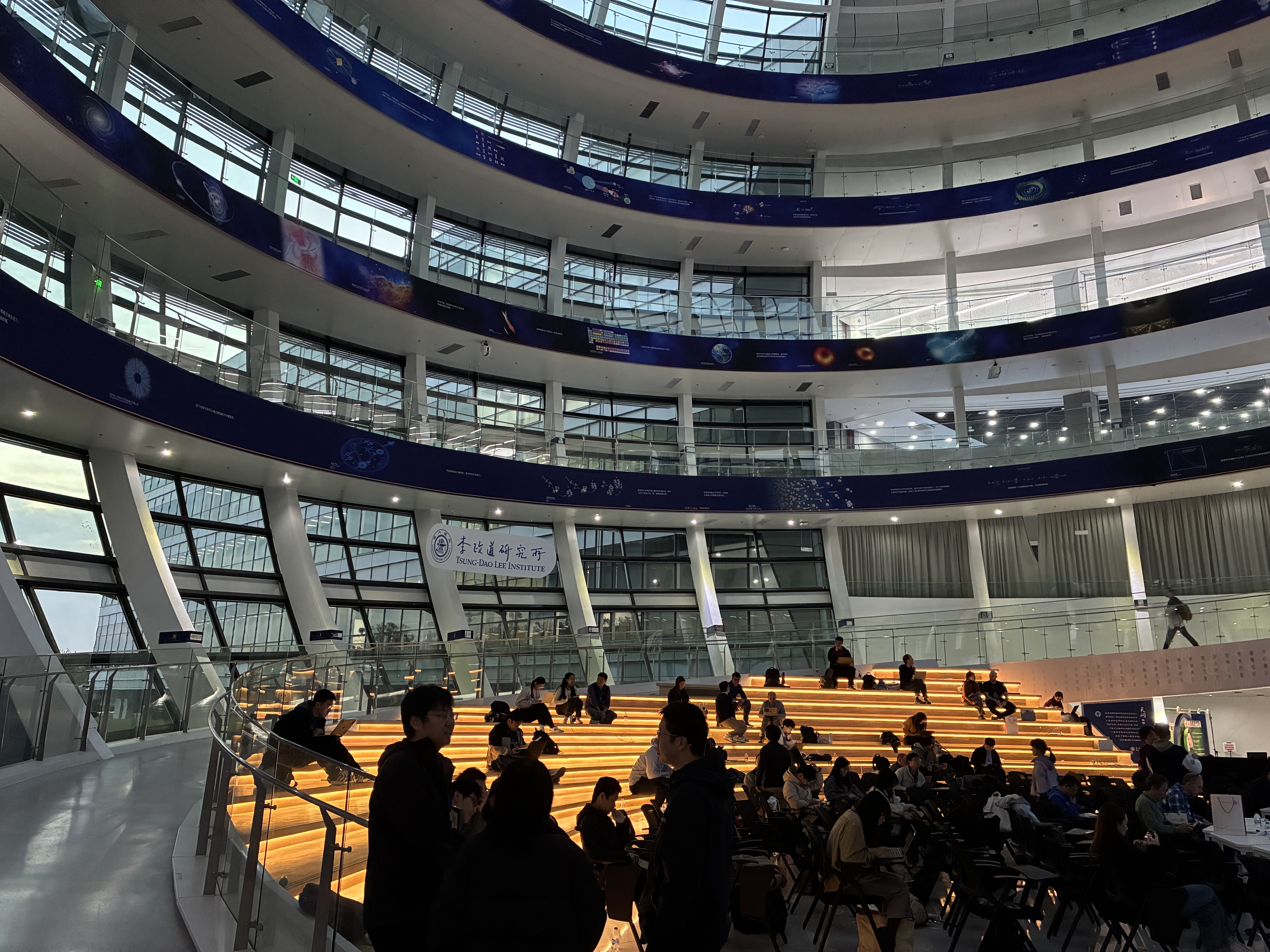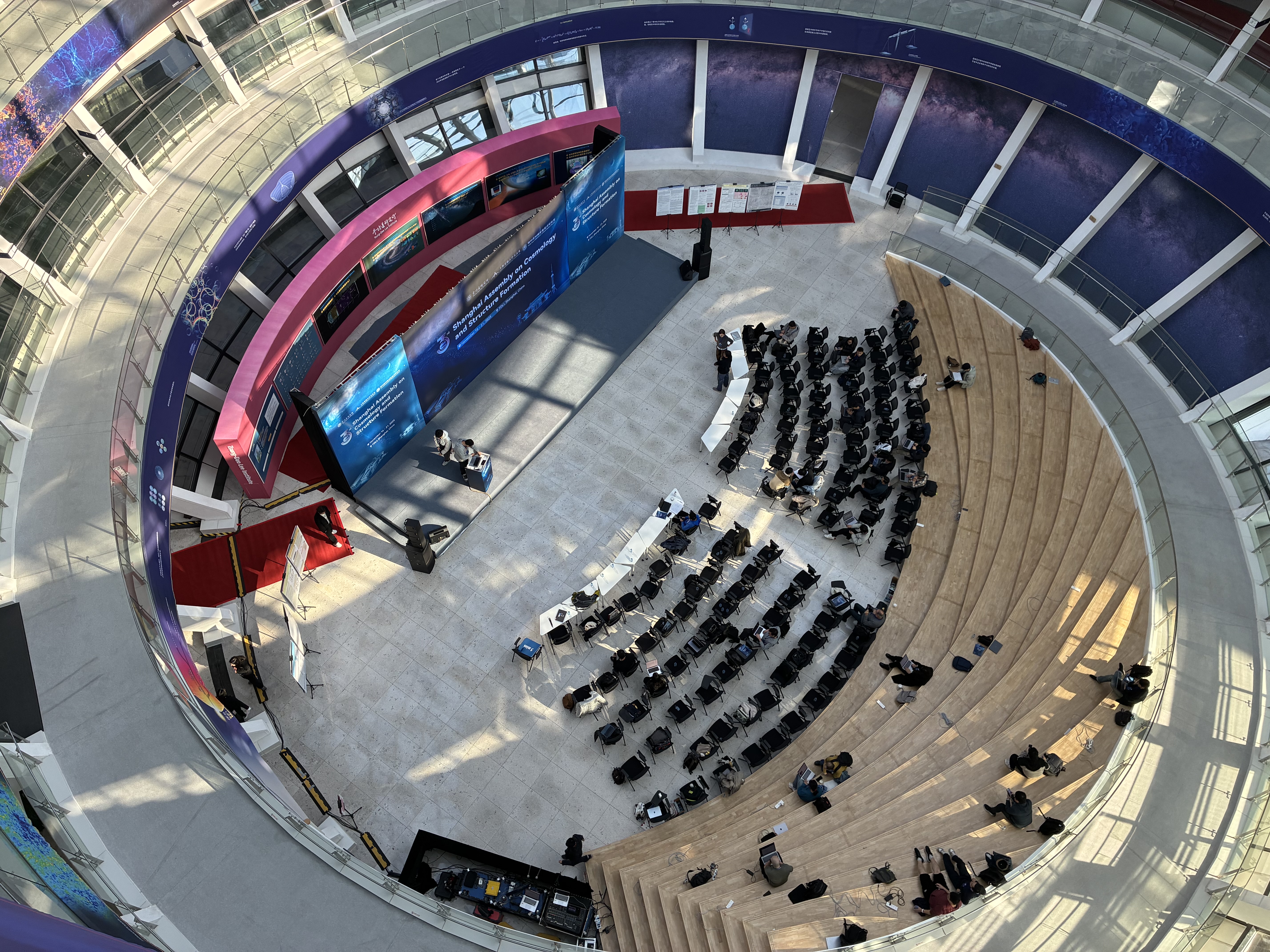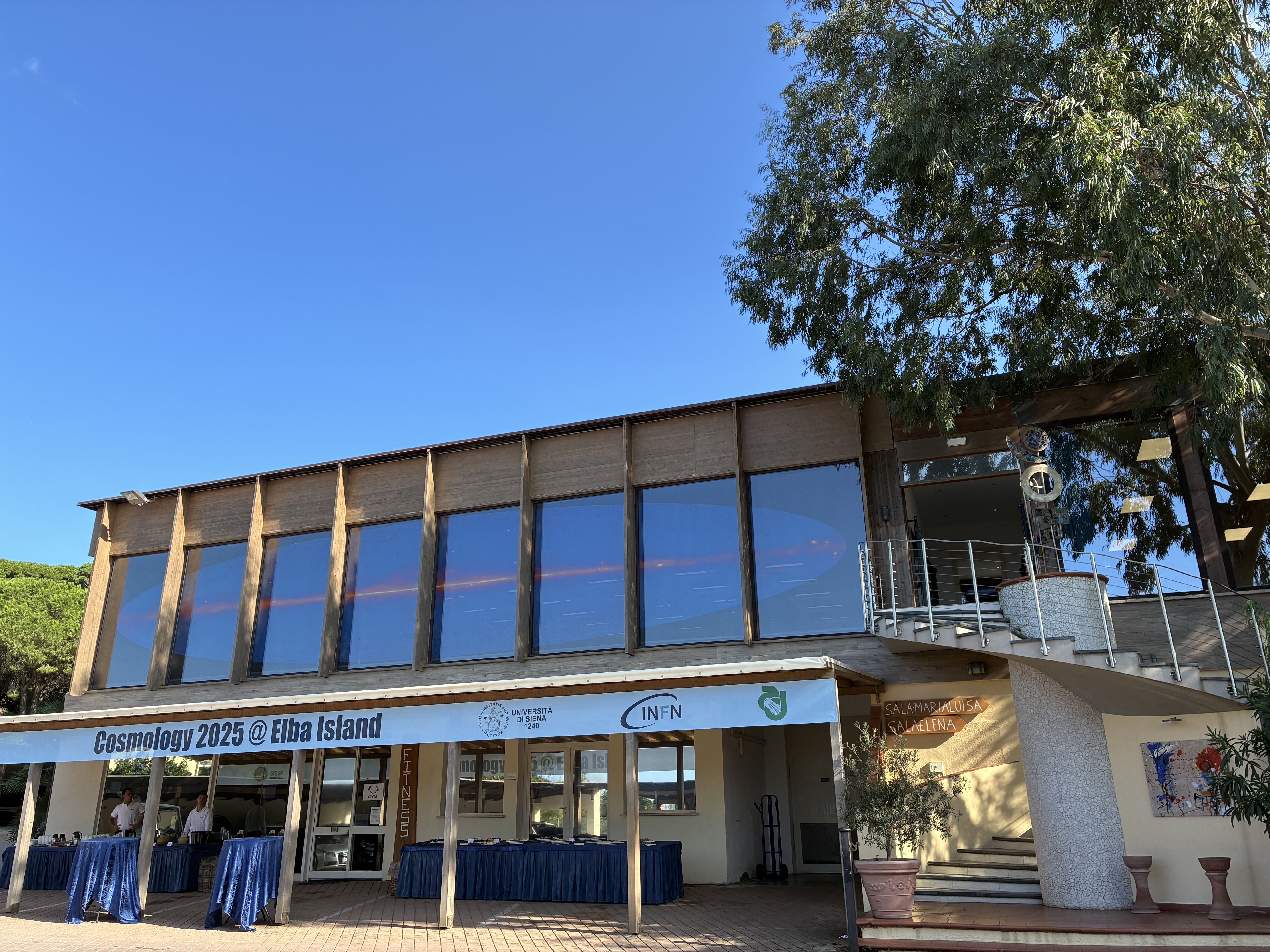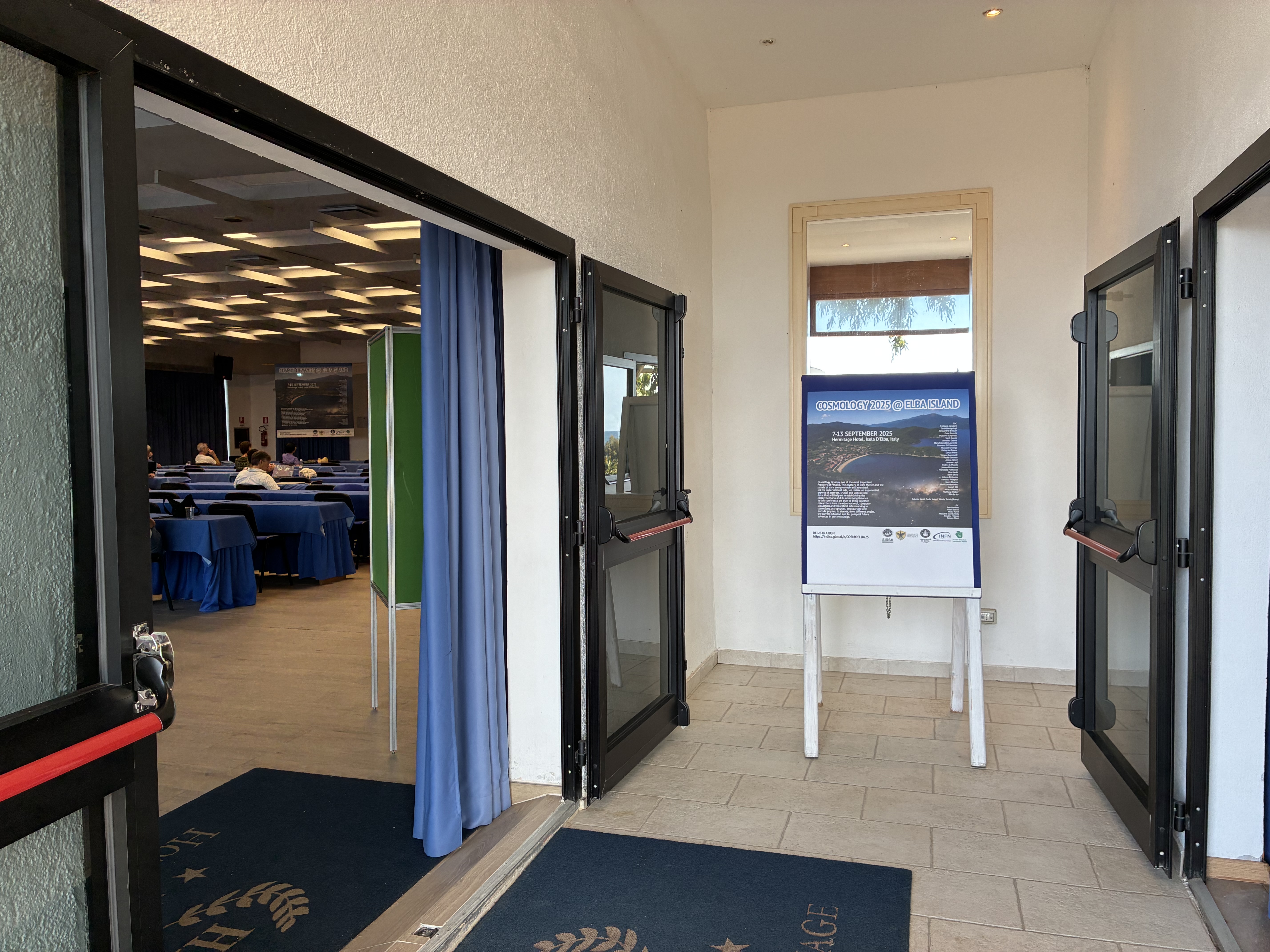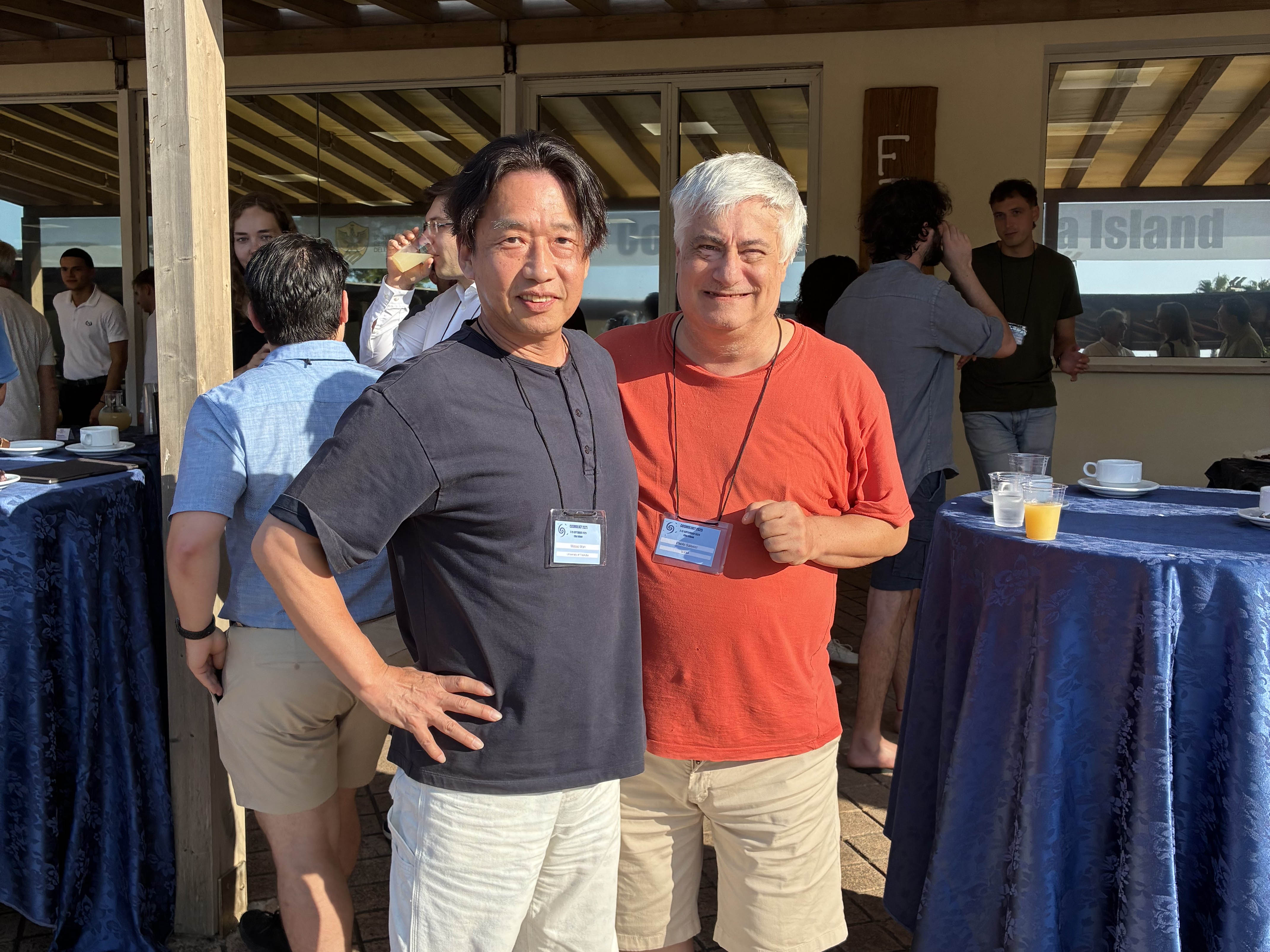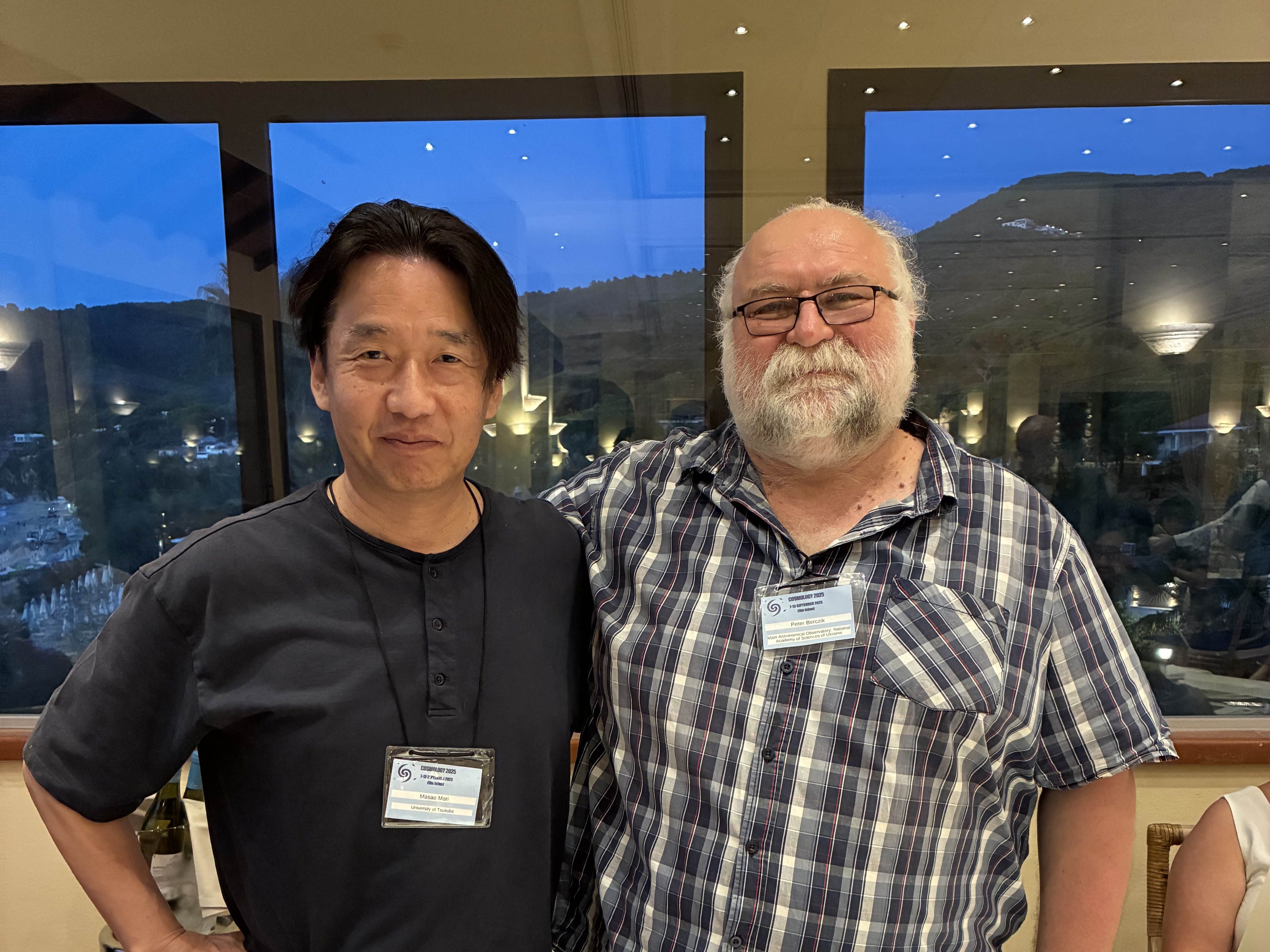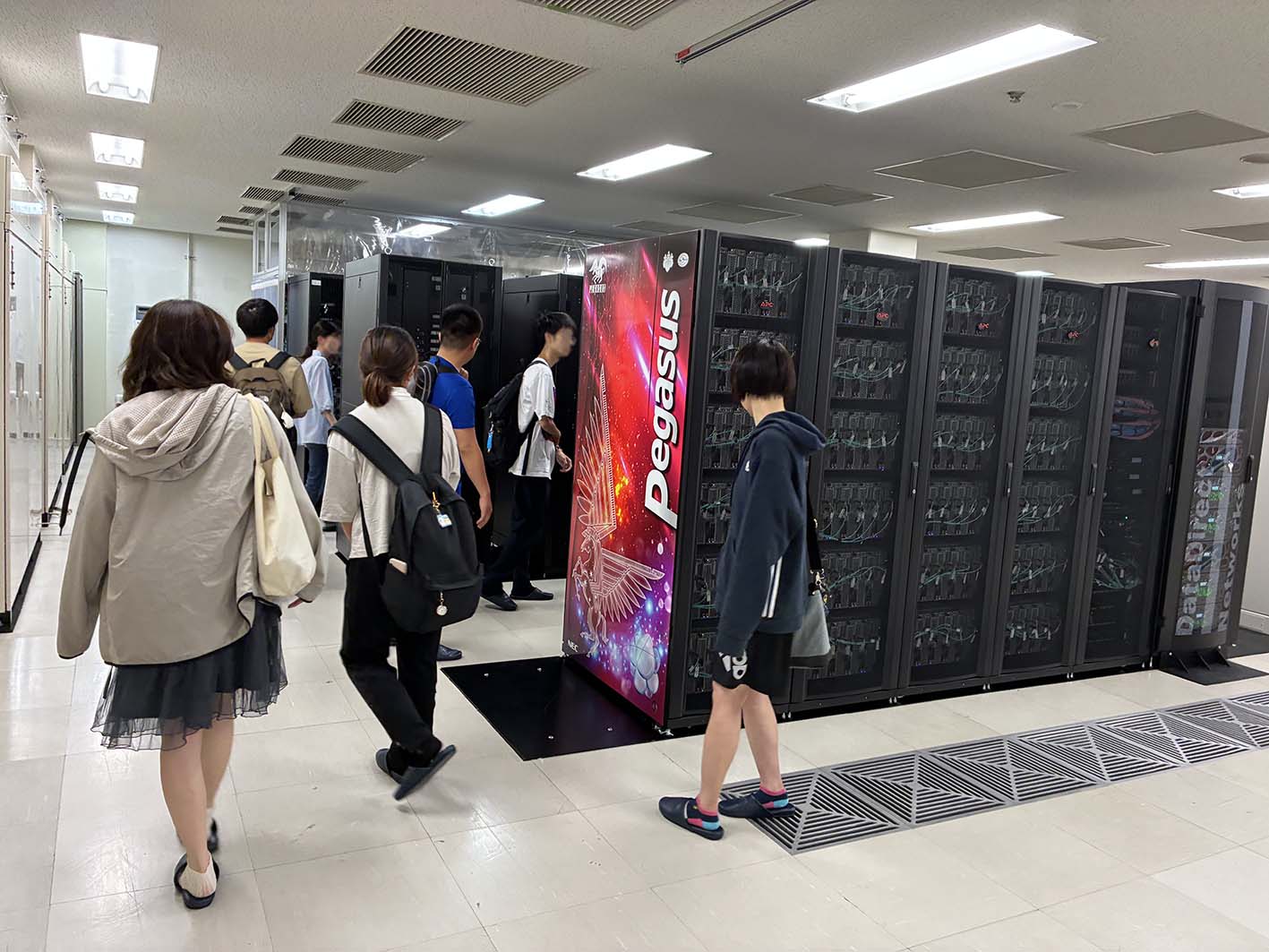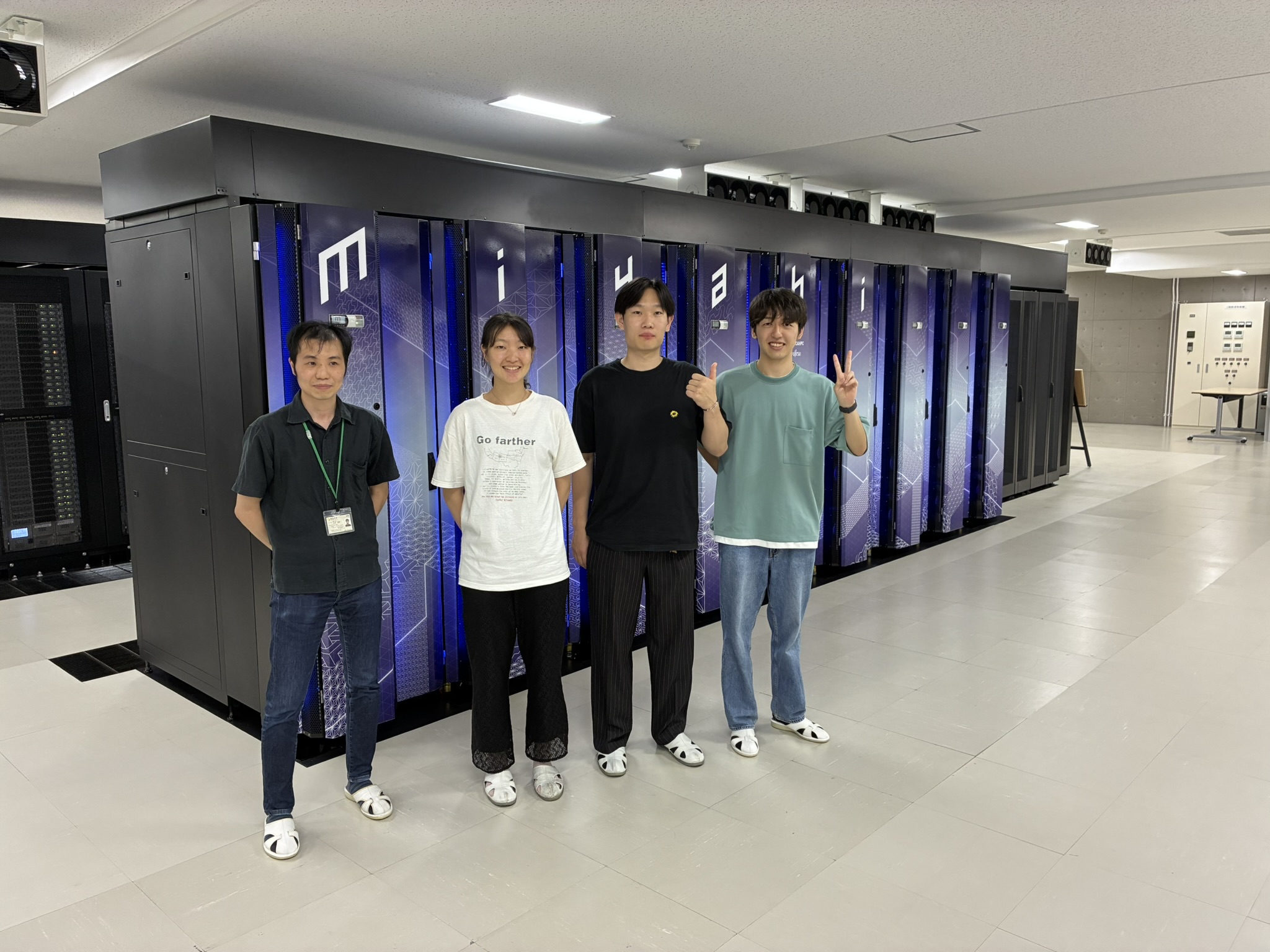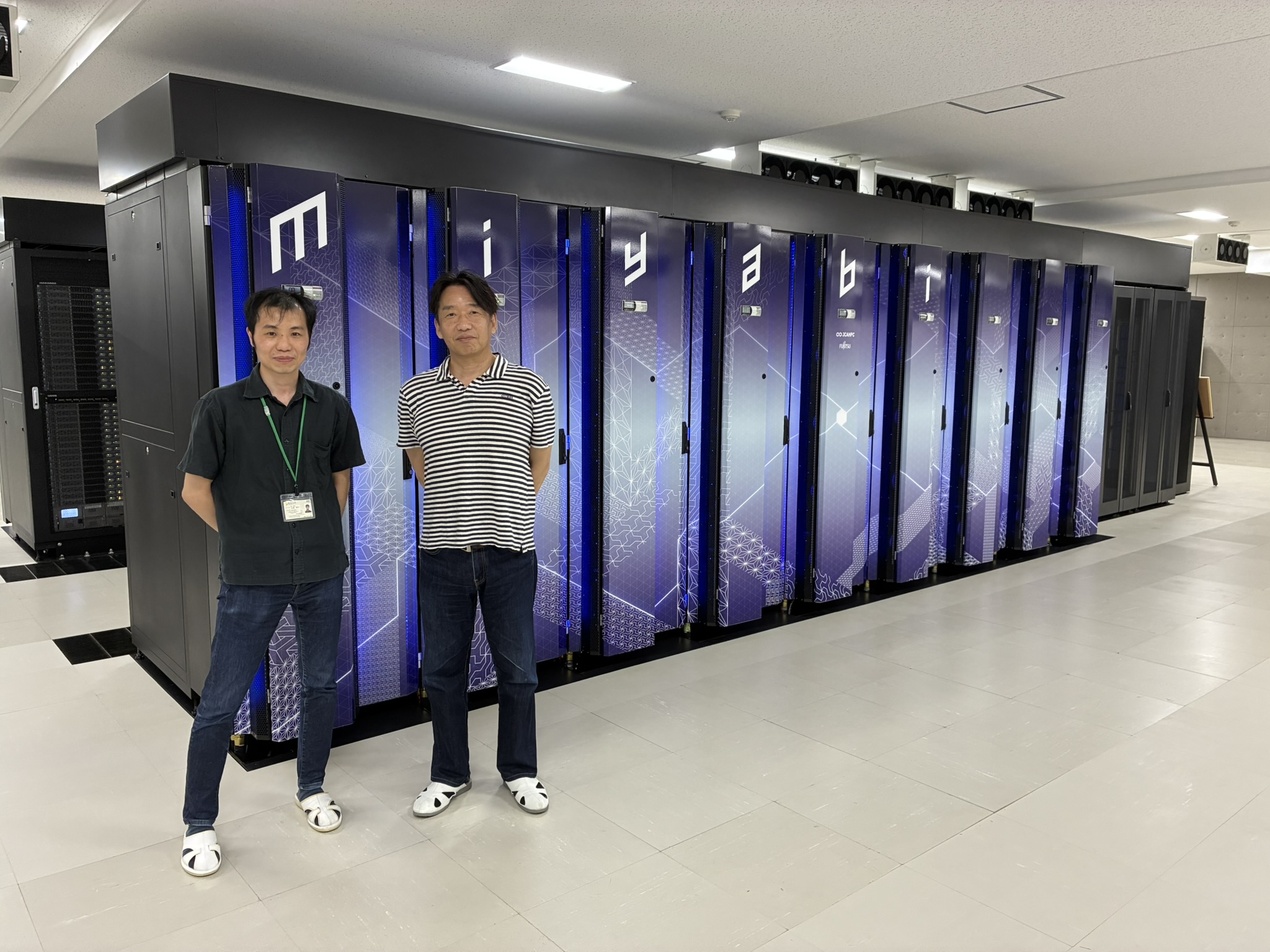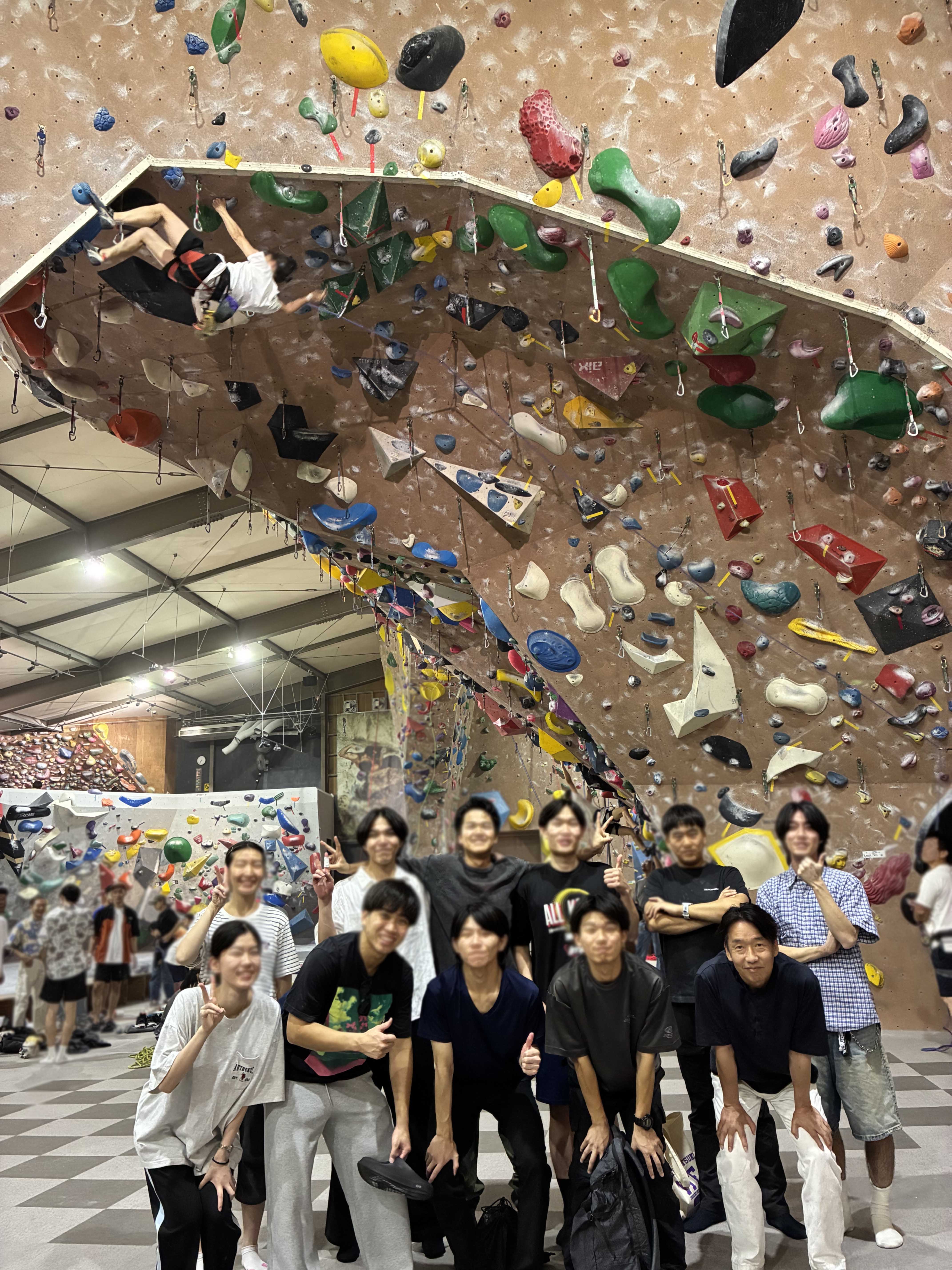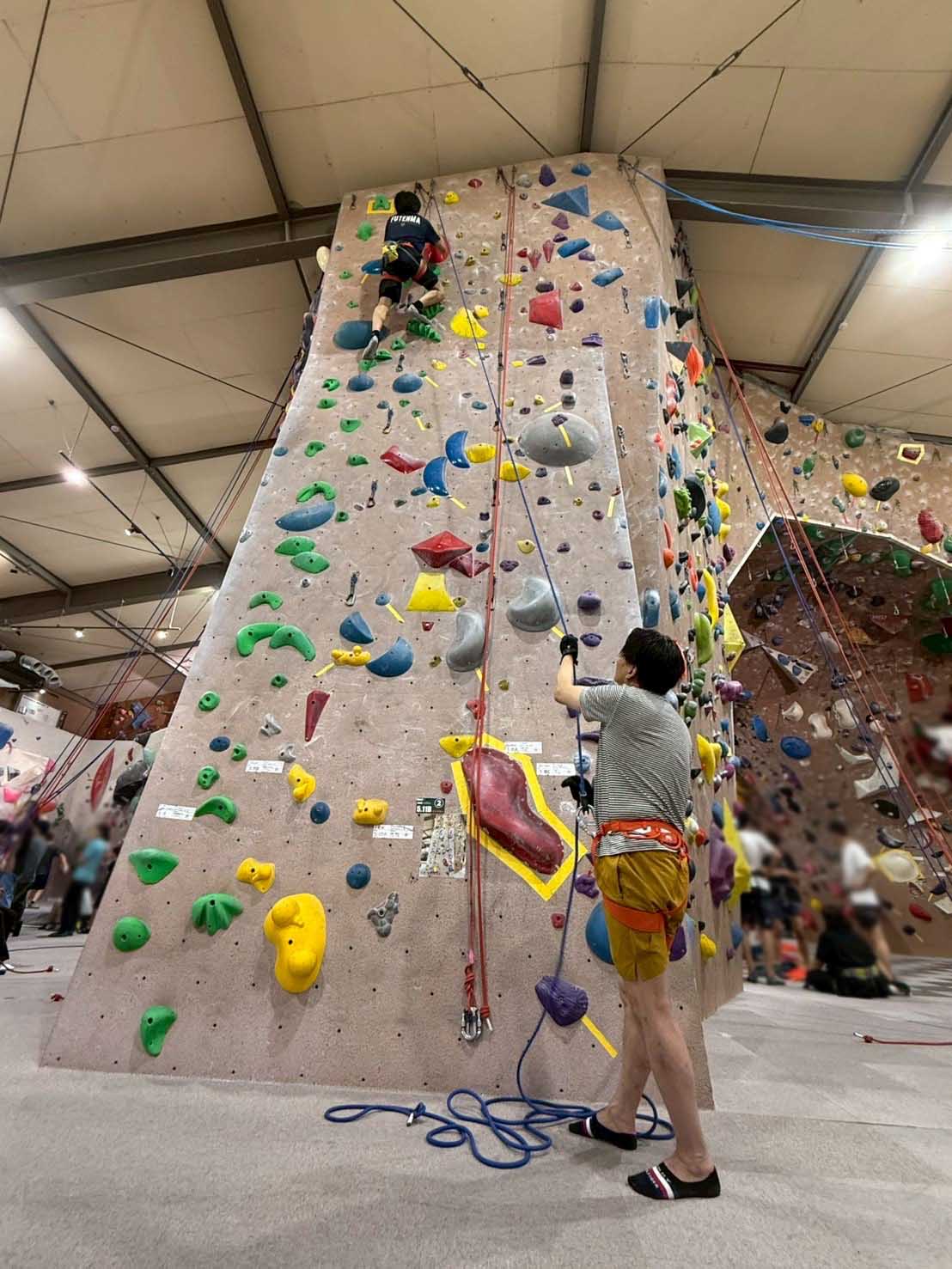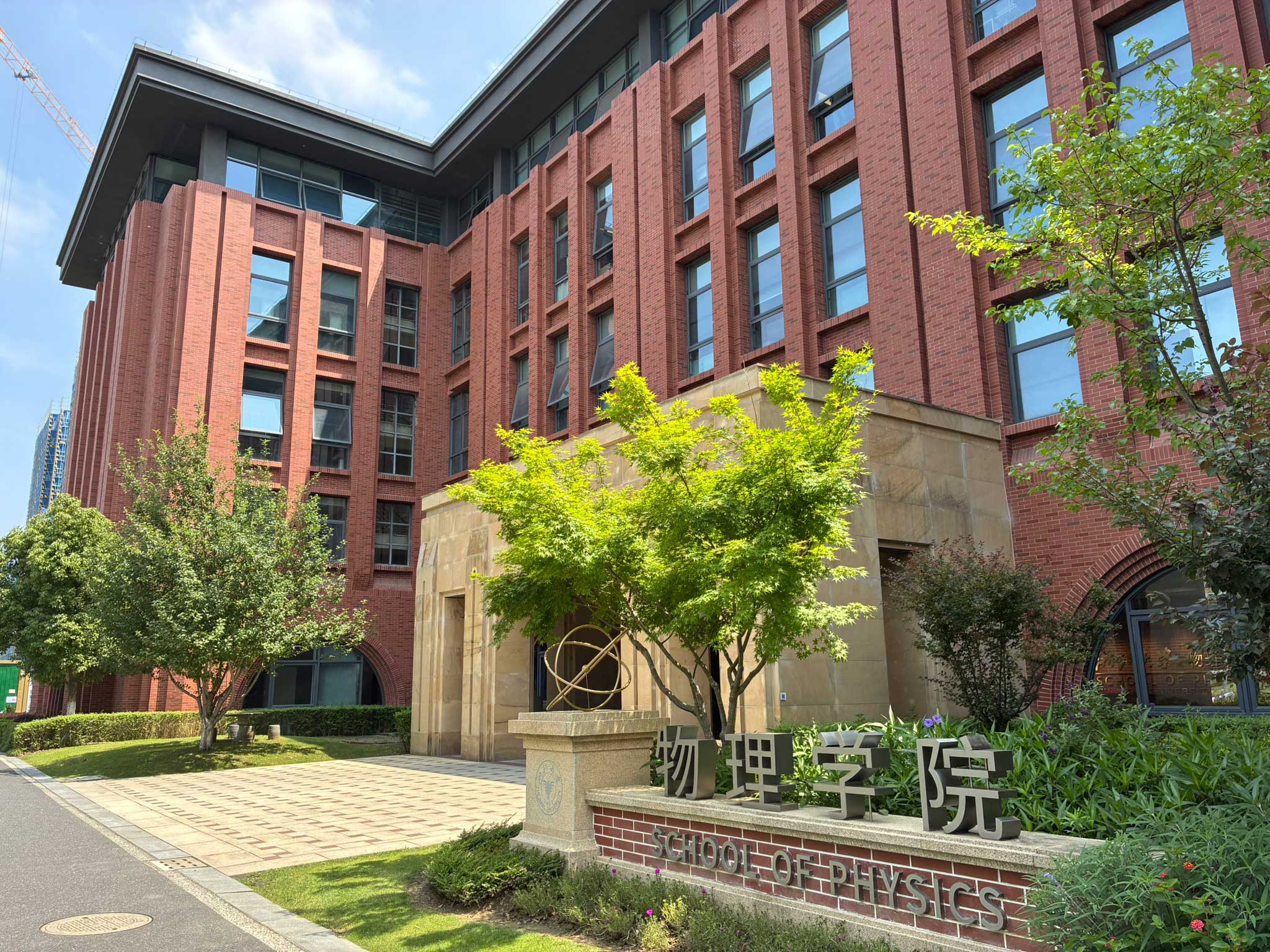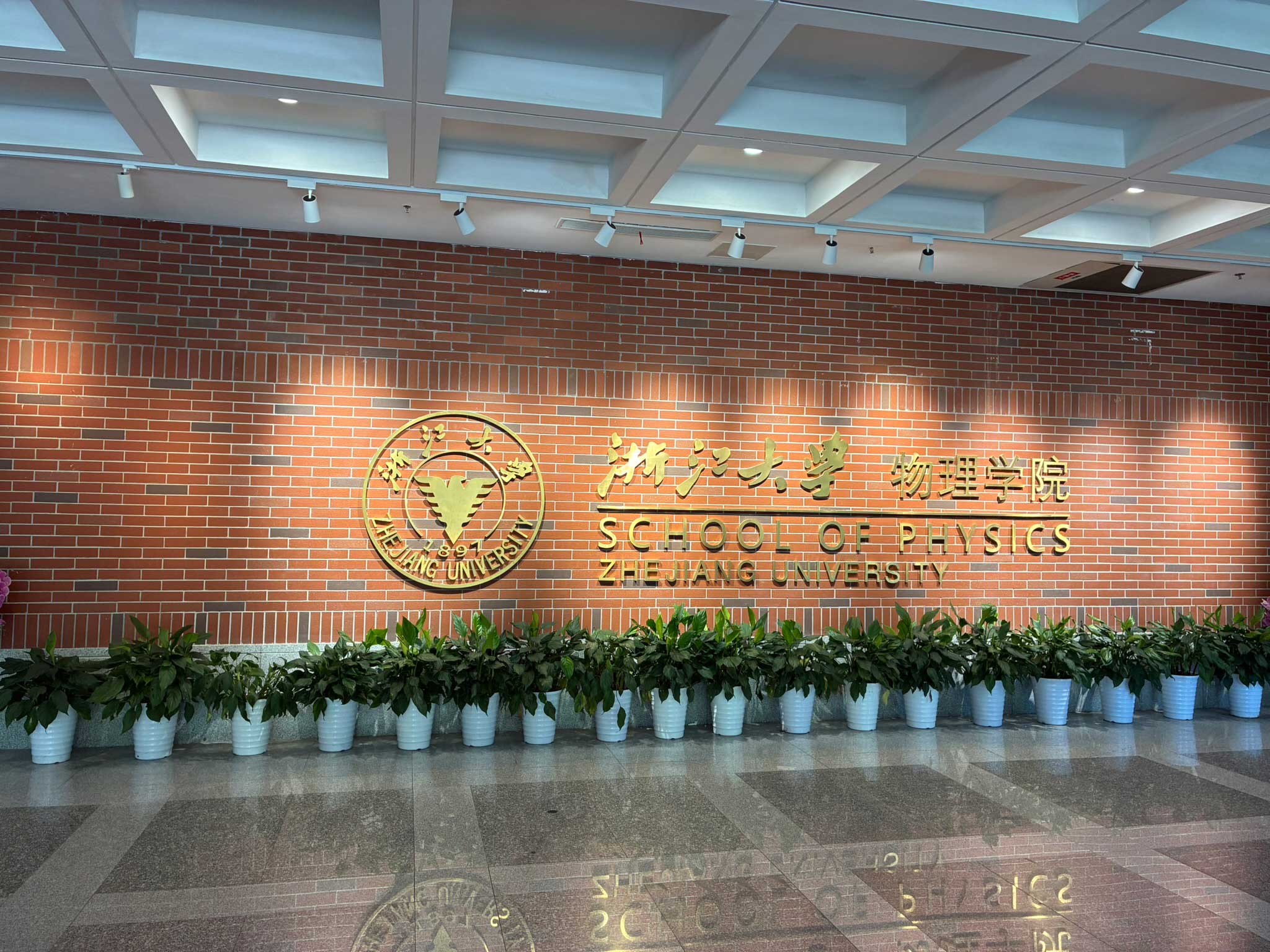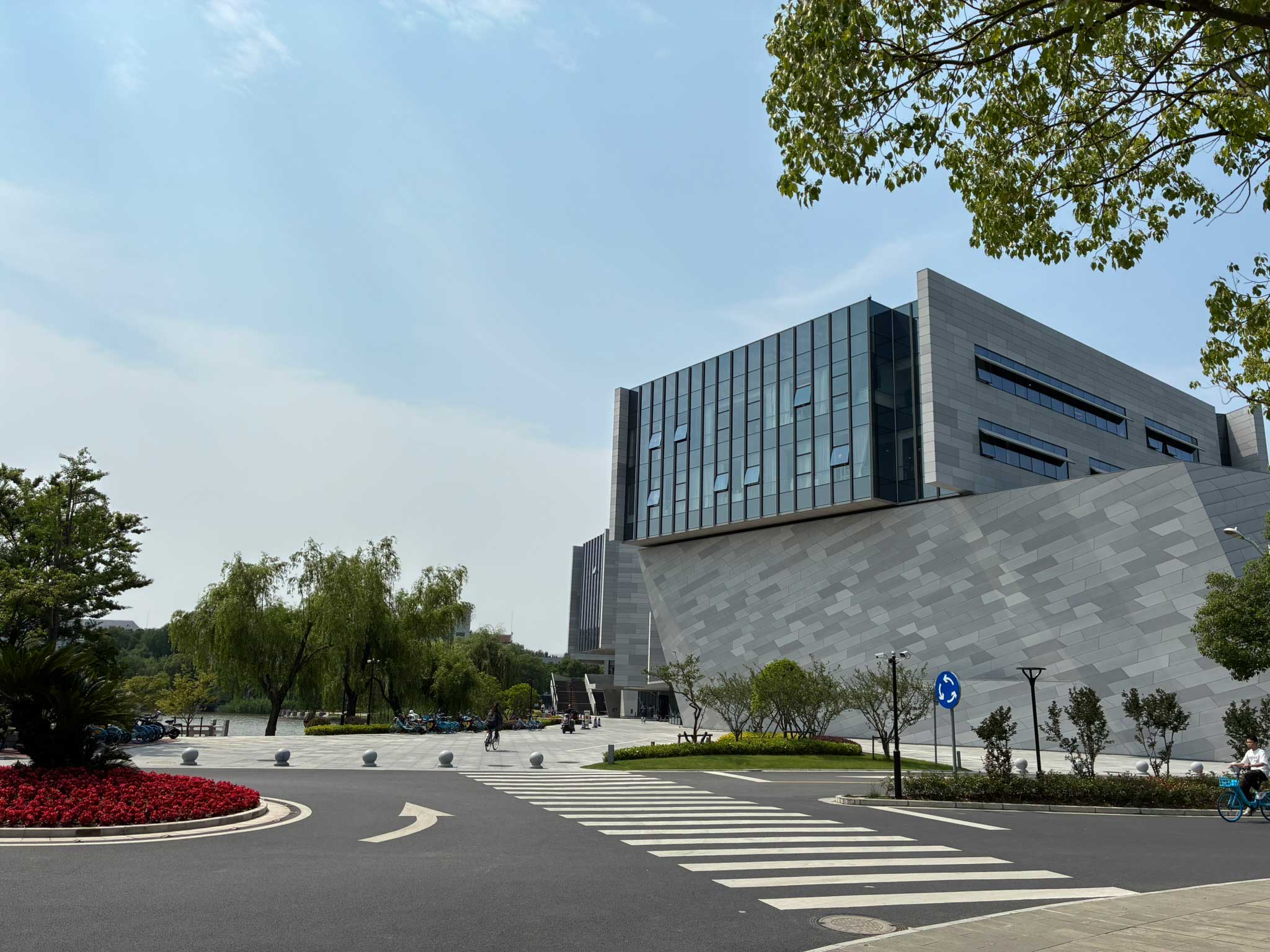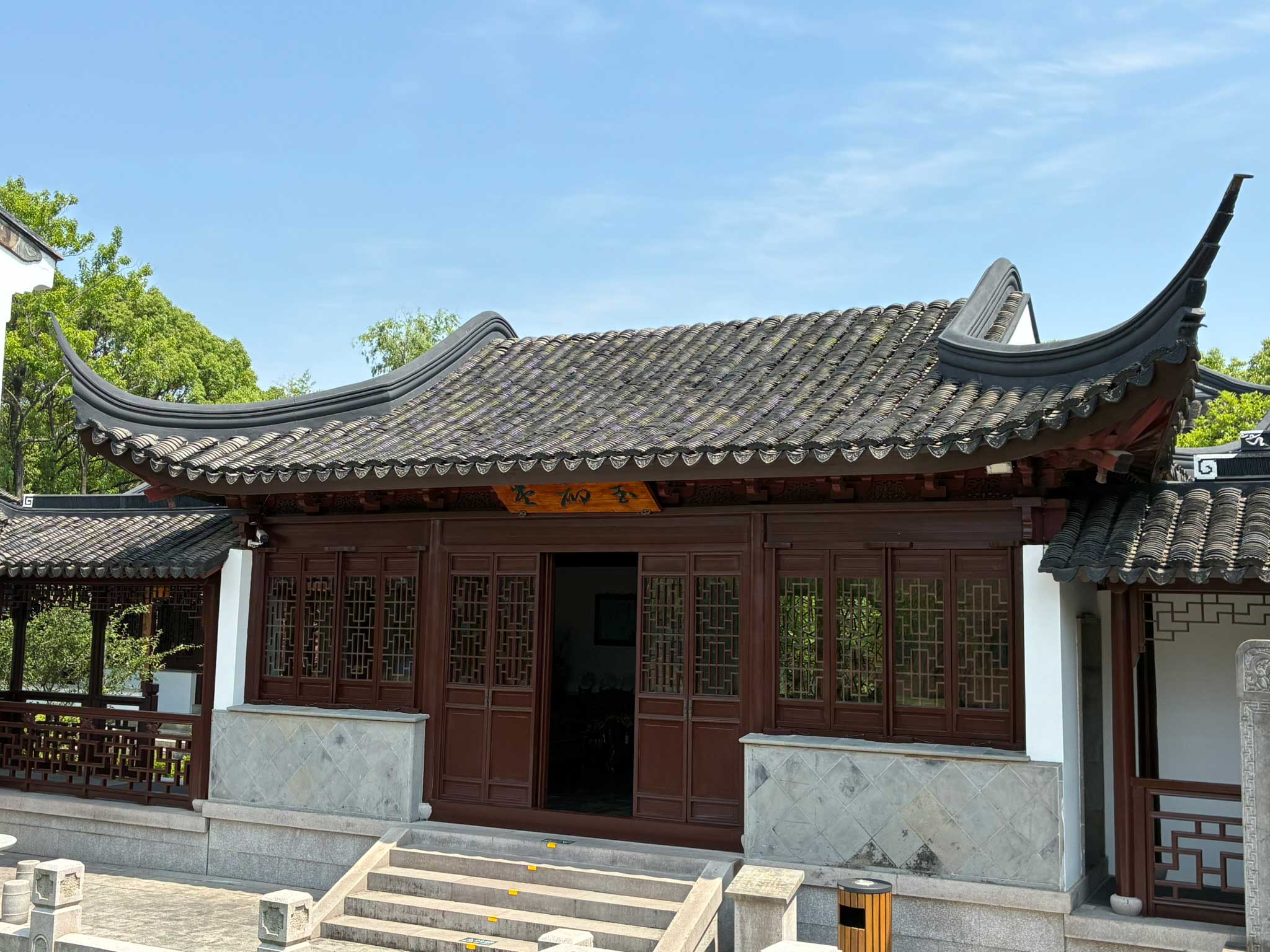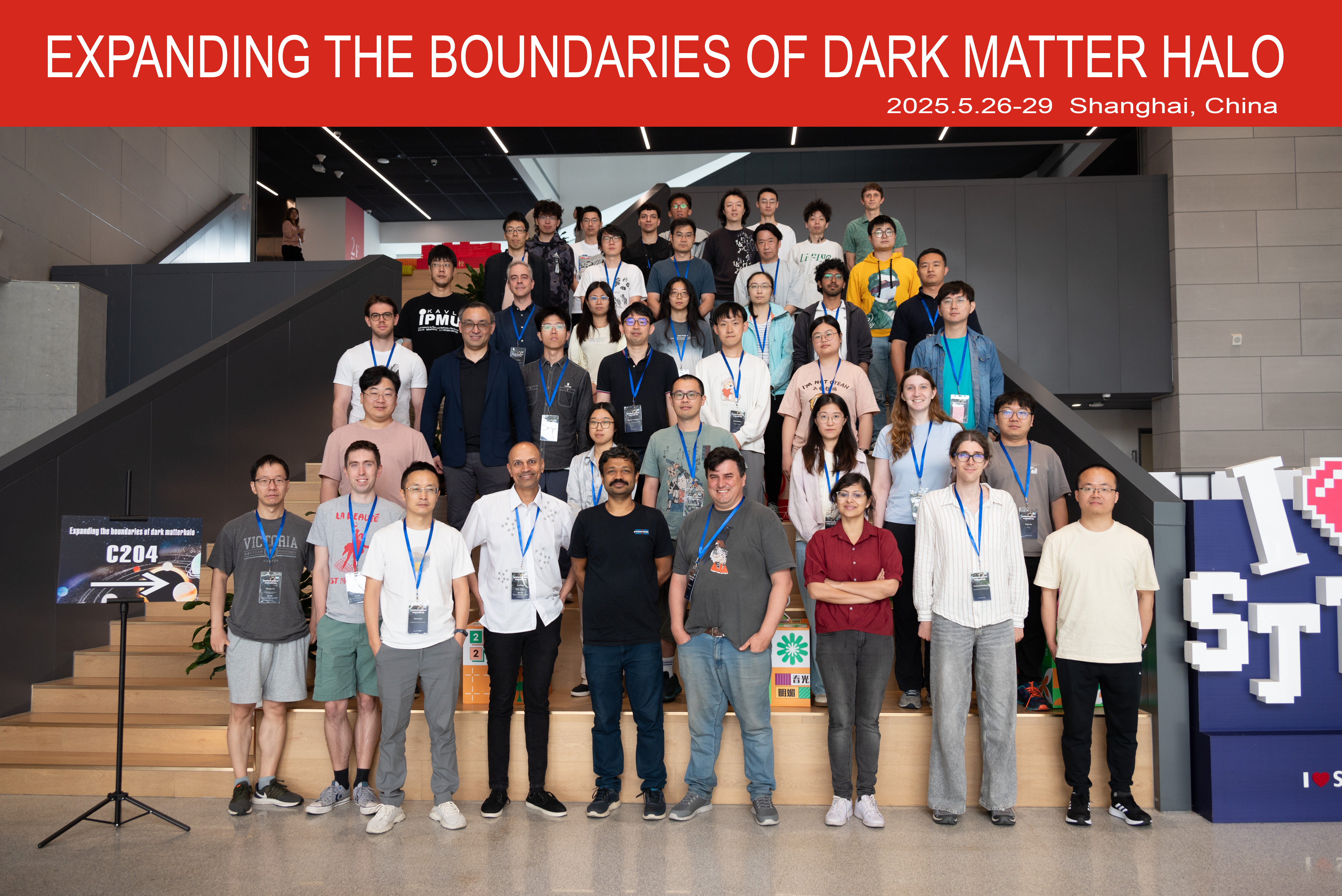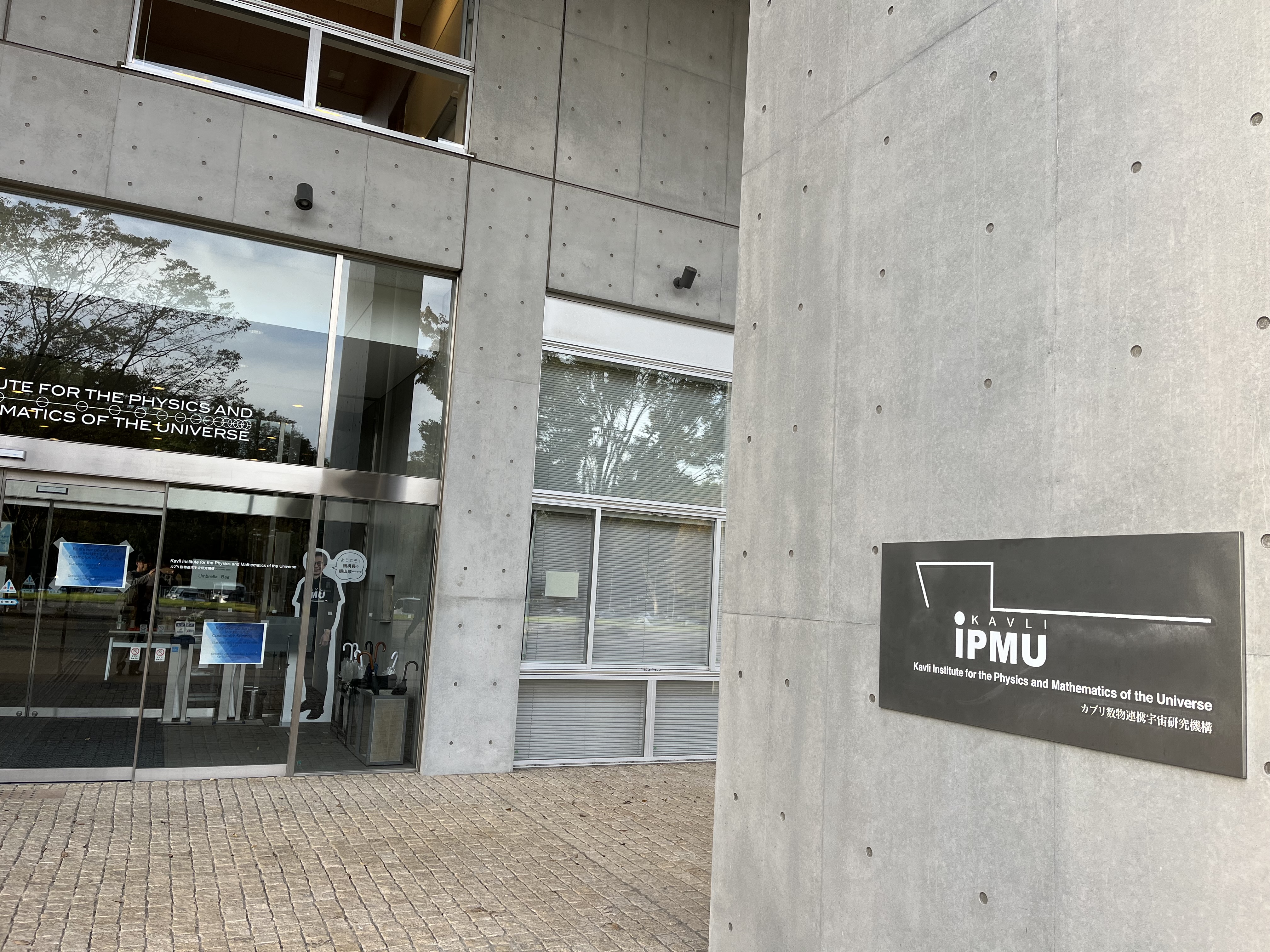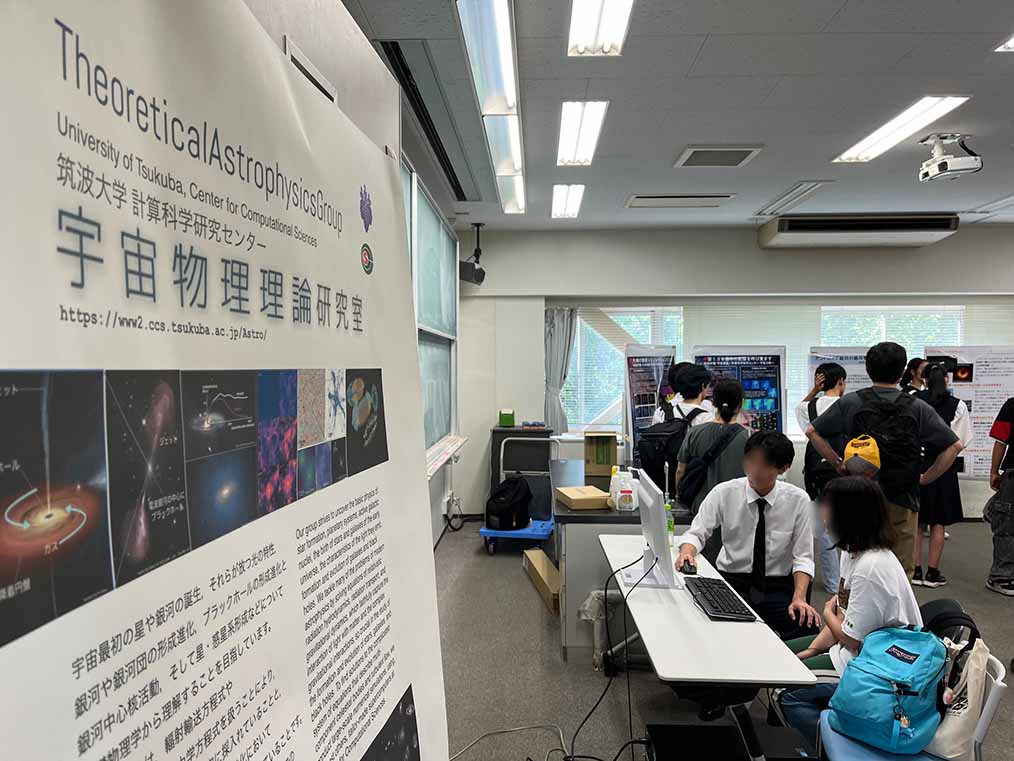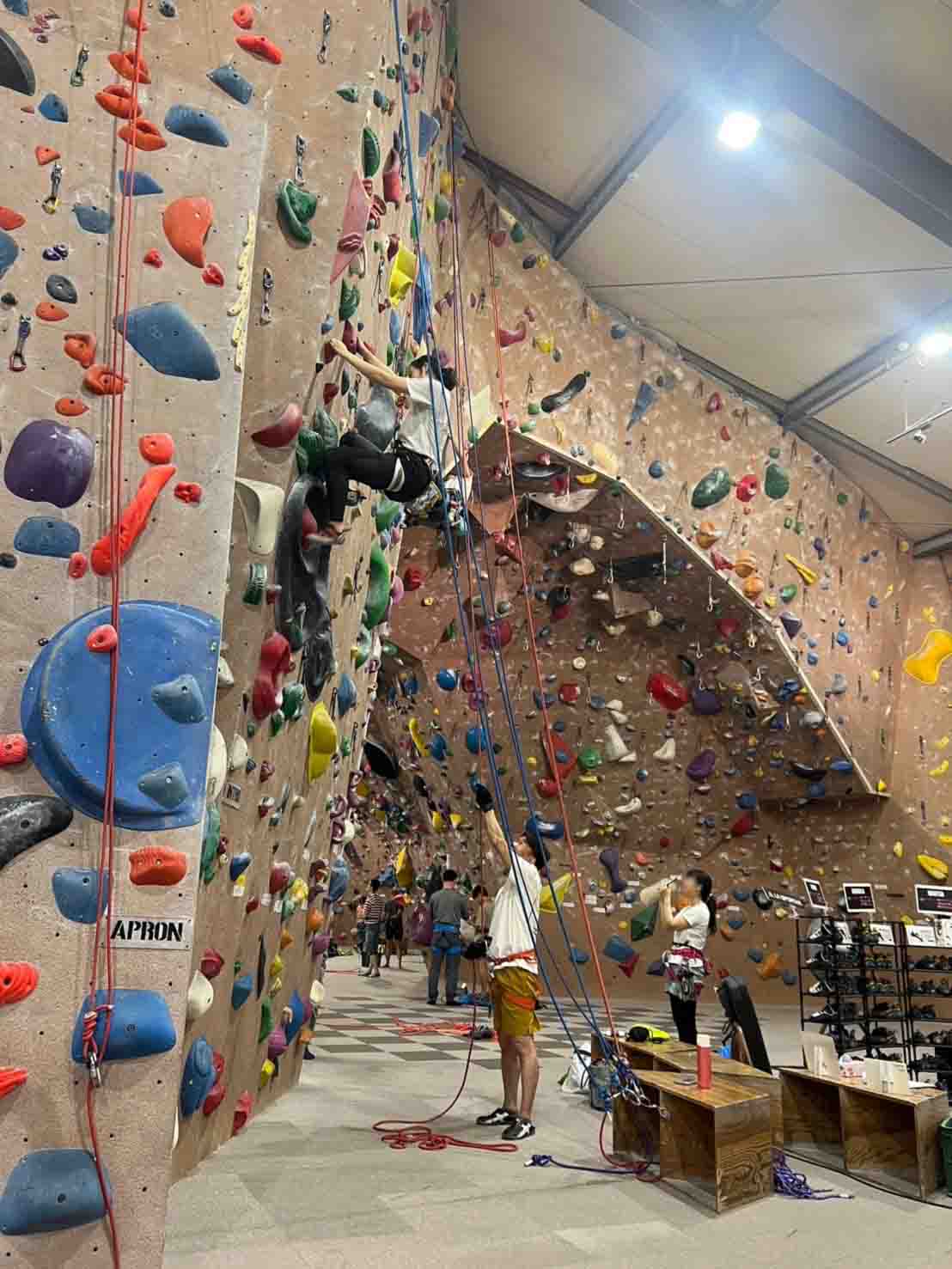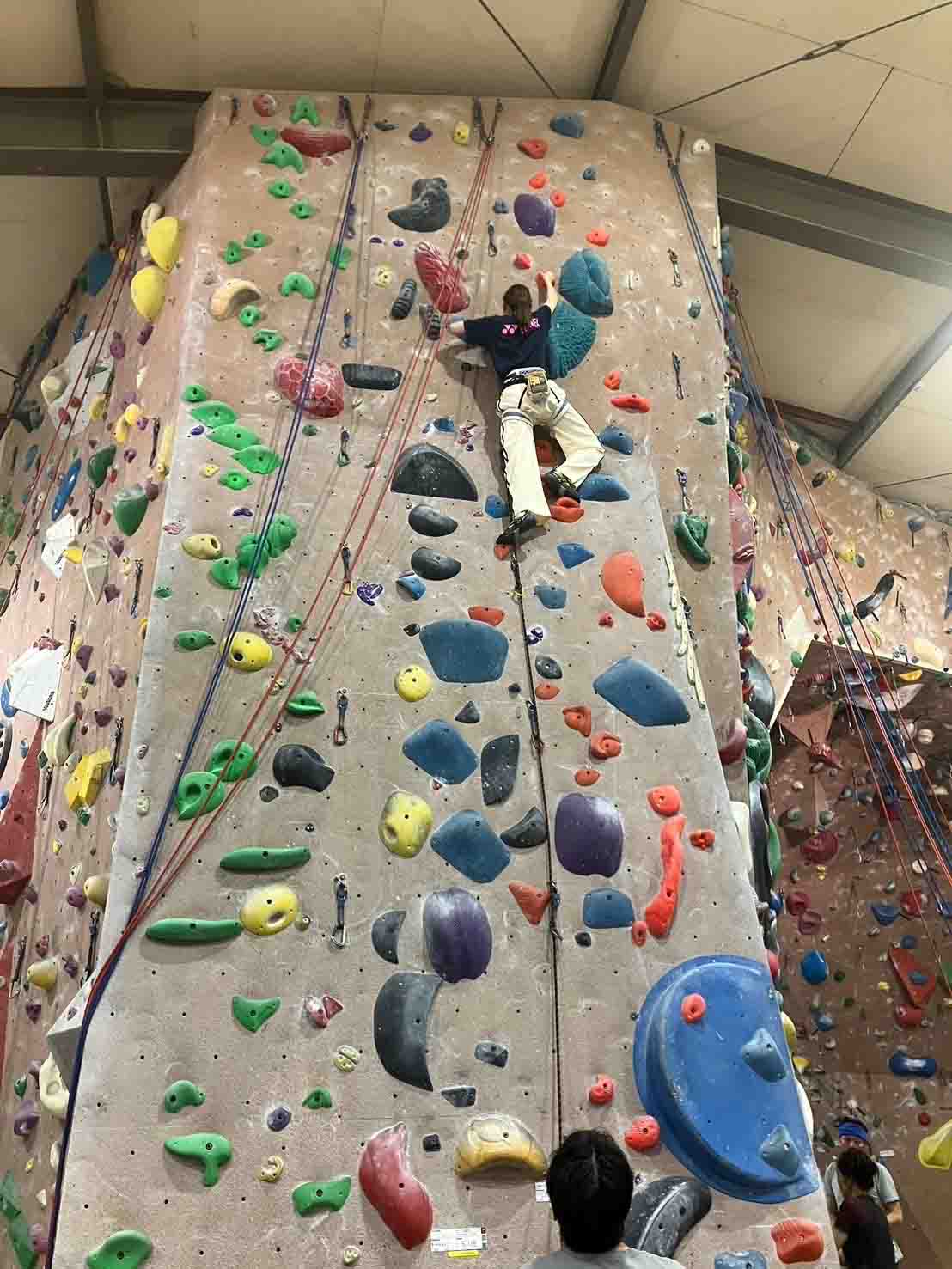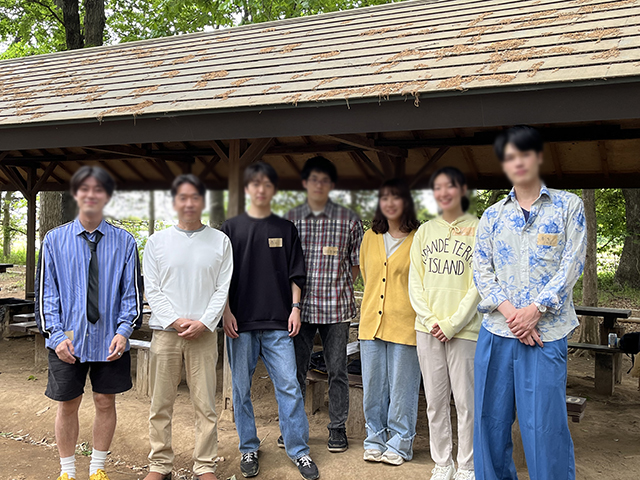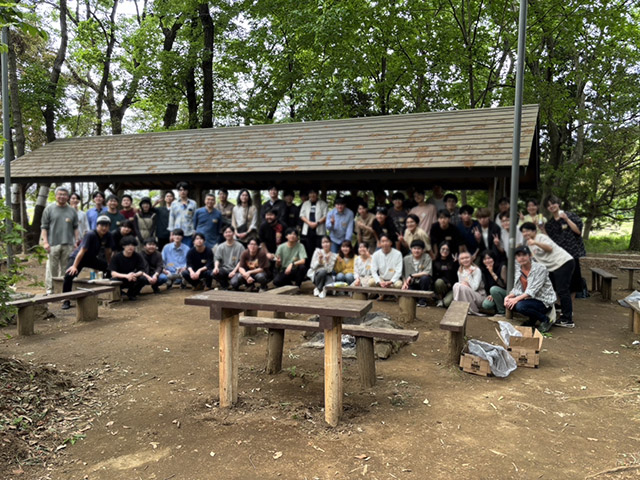This section highlights our latest research activities, including publications, conference
presentations, media coverage, and collaborative projects. We also share updates on team events
and extracurricular activities that strengthen connections and promote a healthy work–life
balance within the group.
-
Nov. 24 to Dec. 13, 2025
Misa Yamaguchi (Ph.D. student, 1st year) is staying at Zhejiang University in Hangzhou,
China, to conduct research on galaxy evolution.
-
Nov. 29, 2025
Our coauthored paper with Koki Ohtaki (University of Rome) and Yudai Kazuno (MSc 2022),
Collision frequency between dark matter subhaloes within Milky Way-like
galaxies,
has been published online in New Astronomy.
[New
Astronomy /
arXiv:2511.16464]
-
Nov. 20, 2025
Our coauthored paper with Koki Ohtaki (University of Rome) and Yudai Kazuno (MSc 2022),
Collision frequency between dark matter subhaloes within Milky Way-like
galaxies,
has been accepted for publication in New Astronomy.
[arXiv:2511.16464]
-
Nov. 19, 2025
At the international conference “The 3rd Shanghai Assembly on Cosmology and Structure Formation,” held
at the Tsung-Dao Lee Institute, Shanghai Jiao Tong University, from Nov. 17 to 21, 2025, the latest
results from my team were presented.
Recent submissions entitled “Cusp-to-Core Transition of Dark Matter Halos across Galaxy Mass Scales” and
“Simultaneous Formation of the Andromeda Giant Southern Stream and the Substructures in the Andromeda
Halo”
were introduced, leading to many questions and comments and resulting in very fruitful discussions.
-
Nov. 12, 2025
We submitted a co-authored paper titled
"The Characteristic Mass and Energy Conversion Efficiency in the Cusp-Core Transition of
Dark Matter Haloes: Implications for Scaling Relations and Supernova Feedbacks"
,
by Michi Shinozaki (MSc, 1st year), Masao Mori, Yuka Kaneda (PhD, 3rd year)
and Kohei Hayashi (Sendai National College of Technology), submitted to
Monthly Notices of the Royal Astronomical Society.
-
Nov. 12, 2025
Taisei Takeuchi (MSc, 2nd year) successfully completed the midterm review of his master’s thesis
entitled “Galaxy Interactions and Evolution in the M81 Galaxy Group.”
-
Nov. 6, 2025
We submitted a coauthored paper with Yuka Kaneda (PhD, 3rd year & MSc. 2nd year), Yohei
Miki(University of Tokyo), Takanori Kirihara (Kitami Institute of Technology),
and Andreas Burkert (University Observatory Munich).
-
Oct. 31 - Nov. 1, 2025
At the “Workshop on the Formation of Astronomical Objects” held at the University of Tsukuba, nine
members of our team presented their research:
Yuka Kaneda(PhD, 3rd year), Misa Yamaguchi(PhD, 1st year), Taisei Takeuchi(MSc, 2nd-year),
Kotaro Hiraki(MSc, 2nd year),
Mayuka Oda(MSc, 1st year), Michi Shinozaki(MSc, 1st year), Maria Arima(under grads), Taisei Nomura(under
grads), and Kenta Hagiwara(under grads).
-
Oct. 30, 2025
Two coauthored papers have been published in the Proceedings of the International
Astronomical Union:
with Ayami Hotta(2023 alumnus) and Koki Otaki(Research Fellow, University of Rome),
Formation of the Andromeda Giant Stream and the 10 kpc Ring
Structure in the Andromeda Galaxy;
and with Yuka Kaneda(3rd-yr PhD. student) and Koki Otaki(Research Fellow, University of Rome),
c-M relation of the sub-galactic dark matter halos and the
effect of the cusp-to-core transition.
-
Oct. 21, 2025
I have been listed as a concurrent faculty member of the Sports Computational Science
Division at the Center for Advanced Research Initiative for Human High Performance (ARIHHP),
University of Tsukuba. See the ARIHHP website.
-
Oct. 11, 2025
Yuka Kaneda (3rd-yr Ph.D. student) has been selected for both the JSPS Postdoctoral Fellowship (PD) and
the JSPS Overseas Research Fellowship for FY 2026. Congratulations!
-
Oct. 6-10, 2025
At the IAU Symposium “The Hidden Beauty of the Galactic Outskirts” held in Córdoba, Spain,
Yuka Kaneda (D3) delivered a presentation titled “Detecting dark matter subhaloes and
wandering intermediate-mass black holes through parallel stellar streams.”
-
Oct. 6-7, 2025
At the “17th Symposium on Discovery, Fusion, Creation of New Knowledge by Multidisciplinary
Computational Sciences,” held at the Tsukuba International Congress Center,
Mayuka Oda (M1) presented a poster on her research titled “Concentrations of Dark Matter
Subhalos in Galaxy Clusters: Lognormal Distributions and a Revised Concentration-Mass
Relation.”
-
Oct. 2, 2025
Kotaro Hiraki (2nd-yr M.S. student) delivered his Master’s thesis midterm presentation in the
Graduate Program in Education (AY 2025) and successfully passed. Congratulations!
-
Oct. 1, 2025
Misa Yamaguchi (1st-yr Ph.D. student) has received a selection offer for the JSPS Research Fellowship
(DC2) for FY 2026. Congratulations!
-
Sep. 24, 2025
I participated in the 2nd ARIHHP Salon and the 4th Cross-Departmental Academic Salon of the
College of Systems and Information Engineering, “Toward deeper integration of health and
sports science with computational science,” and presented a flash talk titled “Fluid dynamics
linking athletes and black holes through computational science.”
-
Sep. 16-18, 2025
I held a collaboration meeting at the University of Tsukuba with Assistant Professor
Sakurako Okamoto (Subaru Telescope, NAOJ) and Taisei Takeuchi (2nd-year M.S. student) on the
evolution of the M81 galaxy group.
-
Sep. 7-13, 2025
I attended the international conference “COSMOLOGY 2025 @ ELBA ISLAND” in Italy and
delivered a summary talk on our work on the structure and evolution of dark matter halos.
The two photos on the left show the conference venue, Hotel Ermitage. The third photo features Paolo
Salucci (SISSA: Scuola Internazionale Superiore di Studi Avanzati), and the fourth photo features
Peter Berczik (National Academy of Sciences of Ukraine).
-
Sep. 9, 2025
Misa Yamaguchi (1st-year Ph.D. student) presented her latest results, “Formation history of
substructures in the Andromeda halo probed by galaxy collision simulations,” at the Autumn Annual
Meeting of
the Astronomical Society of Japan (Yamaguchi).
-
Sep. 4, 2025
Misa Yamaguchi (1st-year Ph.D.
student) gave a poster presentation at “Mirai no Hakase 2025,” held at Hitotsubashi Hall, Hitotsubashi
University.
-
Sep. 1-5, 2025
I attended the international conference “The Dynamic Universe” at Kloster Seeon, Germany, and reported
recent results on galaxy collisions and black hole activity.
The two photos on the left show Kloster Seeon, the conference venue. Founded in 994 in Bavaria,
Germany, the monastery sits on a small island in Lake Seeon.
In the third photo, on the left is Prof. Andreas Burkert (LMU Munich) and in the center is Prof.
Reinhard Genzel (Max Planck Institute for Extraterrestrial Physics).
During my time as a research fellow at the Max Planck Institute for Astronomy (MPIA), Prof. Burkert
was a generous mentor and we have remained close personally.
Prof. Genzel received the 2020 Nobel Prize in Physics for observational research on the Galactic
Center black hole.
In the fourth photo, the person standing on the left is my longtime friend, Prof. Gerhard Hensler
(Professor Emeritus, University of Vienna).
-
Aug. 26, 2025
We submitted a co-authored paper with Koki Otaki (University of Rome), Yohei Miki (University of Tokyo),
and Daisuke Takahashi (University of Tsukuba), entitled “Accelerated Hermite Integrator for
Orbital Integration with OpenACC and MPI”, to the Journal of Supercomputing.
-
Aug. 18, 2025
Misa Yamaguchi (1st yr Ph.D. student) presented her research (in Japanese) at the “Science
Expo: Connecting Myself and the Future,” held as part of Expo 2025 Osaka, Kansai.
Her talk focused on large-scale simulations of galaxy collisions, particularly a minor merger in the
Andromeda Galaxy, through which she explained the complex composite structure of stellar streams and its
role in understanding galaxy formation.
-
-
Aug. 13, 2025
Additional information on computational science has been included on the Research
page.
-
Aug. 1, 2025
As of August 1, I have taken on an additional role as an affiliated faculty member in the Computational Sport Science Division at
the Advanced Research Initiative for Human High Performance (ARIHHP), University of
Tsukuba.
In parallel with my primary research in astrophysics, I will apply my expertise in fluid
dynamics and computational science to the field of sports science, aiming to understand the
distinctive dynamics of various athletic disciplines from a physics-based perspective.
-
Jul. 30, 2025
We submitted a co-authored paper with Dr. Kohei Hayashi (Sendai National College of Technology),
Yuka Kaneda (3rd-yr Ph.D. student), and Michi Shinozaki (1st-yr master's student),
titled
Cusp-to-Core Transition of Dark Matter Halos across Galaxy Mass Scales [arXiv:2507.22155] to PASJ.
-
Jul. 26, 2025
We submitted a co-authored paper with Dr. Koki Otaki (postdoctoral researcher at the University
of Rome) and Yudai Kazuno (graduated in 2022), titled
Collision frequency between dark matter subhaloes within Milky Way-like
galaxies to the New Astronomy.
-
Jul. 17, 2025
We had a kickoff meeting with Assistant Professor Hashimoto, a member of the observational group at the
University of Tsukuba, to launch a new collaborative study.
The goal of the project is to validate theoretical predictions about the nature of dark matter through
new observations and joint analysis.
-
Jul. 11, 2025
As part of the Undergraduate Research Experience Seminar, students visited the PEGASUS
supercomputer, located in the annex of the Center for Computational Sciences at the University of
Tsukuba.
PEGASUS consists of 150 compute nodes equipped with GPU accelerators, each achieving a
theoretical peak performance of 51 teraflops in double-precision floating-point operations. The system’s
total theoretical peak performance reaches 8.1 petaflops.
In our simulations of galaxy mergers, self-gravity calculations are accelerated using GPUs to enhance
computational efficiency.
-
Jul. 2, 2025
Akifumi Takayama, a first-year master’s student,
presented his study “Galaxy Collisions and Activity of Supermassive
Black Holes” at the 8th Supermassive Black Hole Research Promotion Meeting
held at the University of Tsukuba.
-
Jun. 24, 2025
Yuka Kaneda, a third-year Ph.D. student, visited Prof. Andrea Ferrara at Scuola Normale Superiore in
Pisa,
Italy, where she presented a seminar on our latest research findings.
-
Jun. 23, 2025
A joint research meeting was held at the University of Tokyo's Kashiwa Campus with Yohei Miki, Misa
Yamaguchi (1st-yr, Ph.D. student), Akifumi Takayama (1st-yr, Master's student), and Yoshitomo Takahashi
(1st-yr, Master's student). Following the meeting, we visited the
supercomputer MIYABI, a collaborative development by the University of Tsukuba and the
University of Tokyo.
MIYABI recorded 46.80 PFLOPS on the TOP500 supercomputer performance ranking, making it
the second-fastest
research system in Japan, following RIKEN’s Fugaku. It plays a crucial role in our group’s
investigations
of galaxy evolution, black hole activity, and dark matter halos.
-
Jun. 22, 2025
As a recreational event, we enjoyed a sport climbing session for the first time in a while. With the
participation of new members, it was a wonderful opportunity to strengthen ties not only within our team
but also with colleagues from the broader theoretical astrophysics group.
A total of 11 members joined — six with prior experience and five trying it for the first time. In a
friendly and supportive atmosphere, we challenged both bouldering and top-rope routes. Arriving at the
climbing gym around noon, we ended up staying past 7 p.m., fully absorbed in the experience.
-
Jun. 16-20, 2025
Yuka Kaneda (3rd-yr, Ph.D. student) delivered a presentation on our research findings at the
international
conference “Dancing in the Dark: When Galaxies Shape Galaxies,” held in Sexten, Italy.
-
May 31-Jun. 4, 2025
We visited Zhejiang University (Hangzhou, China) to conduct collaborative research discussions with Dr
Go
Ogiya (Ph.D. 2014), focusing on recent progress and future plans.
The visit to Zhejiang University—surrounded by natural beauty and an expansive campus—was a highly
valuable and stimulating experience. Dr. Go Ogiya, our first doctoral graduate, is currently serving
as
a tenure-track professor at the university. A highlight of the visit was the engaging research
presentations and discussions with his graduate students, Junnan Shen and Zhihao Yin (2nd-yr, Master's
student).
-
May 30, 2025
Misa Yamaguchi (1st-yr, Ph.D. student) has been awarded a fellowship under the JST Next Generation
Researcher Challenging Research Program (SPRING). She will receive financial support for both her
research
and living expenses.
Congratulations!
-
May 26-30, 2025
I participated in the international conference “Expanding the Boundaries of Dark Matter Halo,” held at
Shanghai Jiao Tong University (Program), where
recent results from our joint study with Michi Shinozaki (first year master’s student), Yuka Kaneda
(third year Ph.D. student), and Kohei Hayashi (Sendai KOSEN), titled “Understanding the Cusp to Core
Transition and
the Characteristic Radius in Dark Matter Halos,” were presented.
-
May 26-30, 2025
Yuka Kaneda (3rd-yr, Ph.D. student) delivered a presentation titled “Split Stellar Streams as a Detector
of Dark Satellites and Wandering Black Holes” at the international workshop “Galaxy Formation + AGORA in
Asia 2025,”
held at Osaka University’s Nakanoshima Center.
-
May 24, 2025
The paper titled “Simultaneous Formation of the Andromeda Giant Southern Stream and the Substructures in
the Andromeda Halo,” co-authored by Misa Yamaguchi (1st-yr, Ph.D. student), Takanobu Kirihara (Kitami
Institute of Technology), Yohei Miki (University of Tokyo), Itsuki Ogami (NAOJ), Masashi Chiba (Tohoku
University),
Yutaka Komiyama (Hosei University), and Mikito Tanaka (Hosei University), has been published in
PASJ.
[PASJ]
-
May 21, 2025
The team grew to 13 members in 2025, and although a bit late, we finally had a welcome party to
celebrate
the new arrivals.
-
May 14-16, 2025
At the “Bigdata Astronomy 2025” workshop held at the University of Tsukuba, Yuka Kaneda (3rd-yr, Ph.D.
student) presented her work titled “Estimating Dark Matter Halo Density Profiles from Stellar Streams
Using Convolutional Neural Networks” and Misa Yamaguchi (1st-yr, Ph.D. student) presented her research
titled “Simultaneous Formation of the Four Substructures in the Andromeda Halo.”
-
May 12, 2025
Our proposed project “Galaxy Collisions and the Evolution of the Galactic Habitable Zone” has been
accepted as a 2025 NAOJ Astrobiology Center Project. All formal procedures have been completed.
-
May 11, 2025
The annual joint BBQ of the theoretical and observational astrophysics groups at the University of
Tsukuba
was held at "Yukari-no-Mori."
-
May 1, 2025
In 2025, I started a new challenge in sports science research. Building on our expertise in
astrophysical
fluid dynamics, I am exploring its potential applications to athletic performance and biomechanics.
-
Apr. 28, 2025
One of our undergraduate thesis students has chosen to pursue research through analytical approaches
rather than numerical simulations. While this path may not produce the visually striking figures often
seen in simulation work, it offers a powerful way to understand complex cosmic phenomena by tracing them
back to fundamental physical processes — and can lead to deeply meaningful insights.
-
Apr. 21, 2025
All first-year students have now finalised their research topics. In our group, we emphasise thorough
discussions to ensure that each topic is well-matched to the student’s interests and abilities.
-
Apr. 1, 2025
With the beginning of the new academic year, we have welcomed the following individuals to our team: as
first-year students in the Master’s Programme — Kanta Aimoto, Mayuka Oda, Michi Shinozaki,
Yoshitomo Takahashi, and Akifumi Takayama; and as undergraduate thesis students — Maria Arima,
Taisei Nomura, and Kenta Hagiwara.




